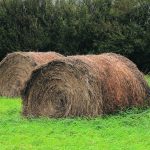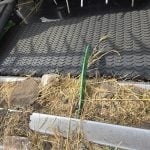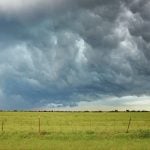Survey will gather data from 1991-94 and 2016-19 about all aspects of forage production from seeding to the final crop
CALGARY — A researcher is offering $200 to each Saskatchewan cattle forage producer who completes an online survey he expects will help counter what he called false greenhouse gas narratives targeting the beef industry. Judson Christopherson says he hopes to determine if the amount of carbon that’s being sequestered in soil by forage crops in […] Read moreTag Archives carbon sequestration — page 2

Study shows Sask. growers sequester more carbon than others
REGINA — A study analyzing the carbon footprint of five key crops found Saskatchewan’s emissions are far lower than other leading producers. The Global Institute for Food Security released the results of its two-part study on canola, wheat, durum, field peas and lentils last week. The study was carried out with the provincial government. Olufunke […] Read more

New research projects focus on genomics
Initiatives announced by Alberta’s Results Driven Agriculture Research agency target grazing, climate change and carbon
Scientists in Alberta and Saskatchewan will use cutting-edge genomics research to help beef and crop producers improve grazing management, climate resiliency and sequestration of carbon in soil. The research includes a $6.3 million project at the University of Alberta that will seek to promote climate action through grazing. It will look at microbes in the […] Read more
Methane emission less than predicted
Prairie wetlands provide a whack of environmental benefits. They reduce the risk of flooding, help purify water, store carbon and are a critical habitat for ducks. On the downside, they emit methane, a powerful greenhouse gas. But research from Ducks Unlimited Canada suggests that wetlands in Western Canada produce less methane than wetlands in warmer […] Read more

Making a case for the cow-calf sector
Unfortunately, the cow-calf sector is viewed as a significant source of greenhouse gases by some. Ill-informed journalists, academics and politicians cite fossil fuel use, fertilization, enteric emissions and agricultural wastes as reasons to phase out the beef production industry and adopt alternative diets.

GHG debate needs debit-credit balance
The home plate in baseball is 17 inches wide. I listened to a presentation by the University of Saskatchewan agricultural economist Richard Gray at the end of March. In his submission, he suggested there was an error in greenhouse gas emission accounting. Kevin Hursh mentioned this in his column on page 11 of the April […] Read more

U.S. ag department pays farmers to preserve grasslands
North of the border, the federal government subsidizes producers to plant cover crops and practise rotational grazing
Agriculture Canada has said the fund is designed to support farmers in adopting beneficial management practices that store carbon and reduce greenhouse gases.
Recalling the short, unhappy history of carbon sequestration
There’s nothing neutral about “carbon neutrality” and our wishful thinking won’t make it so.

Grasslands called key to carbon future
A researcher says grasslands must be retained now if landowners are to take advantage of carbon markets in the future
University of Alberta researcher Ed Bork said he believed landowners will eventually be paid for carbon storage and other environmental benefits that grasslands and pastures provide.
Project studies how to measure soil carbon
To get a better handle on how much carbon is stored in soil and how soil carbon is changing over time, researchers from the University of Saskatchewan, the University of Guelph and other institutions are conducting a case study at a 32,000-acre farm near Moosomin, Sask.






